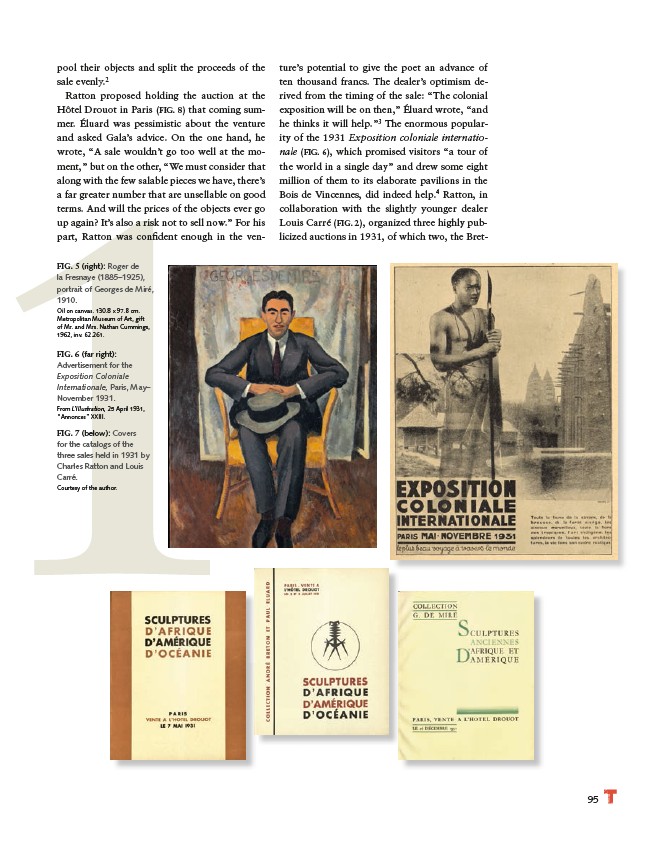
95
pool their objects and split the proceeds of the
sale evenly.2
Ratton proposed holding the auction at the
Hôtel Drouot in Paris (FIG. 8) that coming summer.
1931
Éluard was pessimistic about the venture
and asked Gala’s advice. On the one hand, he
wrote, “A sale wouldn’t go too well at the moment,”
but on the other, “We must consider that
along with the few salable pieces we have, there’s
a far greater number that are unsellable on good
terms. And will the prices of the objects ever go
up again? It’s also a risk not to sell now.” For his
part, Ratton was confi dent enough in the venture’s
potential to give the poet an advance of
ten thousand francs. The dealer’s optimism derived
from the timing of the sale: “The colonial
exposition will be on then,” Éluard wrote, “and
he thinks it will help.”3 The enormous popularity
of the 1931 Exposition coloniale internationale
(FIG. 6), which promised visitors “a tour of
the world in a single day” and drew some eight
million of them to its elaborate pavilions in the
Bois de Vincennes, did indeed help.4 Ratton, in
collaboration with the slightly younger dealer
Louis Carré (FIG. 2), organized three highly publicized
auctions in 1931, of which two, the Bret-
FIG. 5 (right): Roger de
la Fresnaye (1885–1925),
portrait of Georges de Miré,
1910.
Oil on canvas. 130.8 x 97.8 cm.
Metropolitan Museum of Art, gift
of Mr. and Mrs. Nathan Cummings,
1962, inv. 62.261.
FIG. 6 (far right):
Advertisement for the
Exposition Coloniale
Internationale, Paris, May–
November 1931.
From L’Illustration, 25 April 1931,
“Annonces” XXIII.
FIG. 7 (below): Covers
for the catalogs of the
three sales held in 1931 by
Charles Ratton and Louis
Carré.
Courtesy of the author.